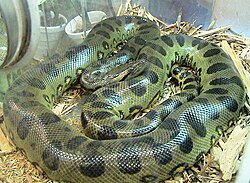Otter reproduction is complicated, can have one or two young in the year depends on water.
CROCODRILE
Crocodiles are large reptiles, broad, flattened head and triangular in shape, with strong jaws, which have very sharp teeth that open to the jaws; ear openings are located on both sides of the head and nostrils and eyes are prominences protruding from it.
ZEBRA
They are known as zebra (or zebra, spelling obsolete 1) to three species of the genus Equus own Africa, Equus quagga (common zebra) Equus grevyi (Grevy) and Equus zebra (Zebra mountain); the same genus which also includes horses and donkeys.

LION
The lion (Panthera leo) is a carnivorous mammal of the family Felidae and one of the five species of the genus Panthera. Some males, exceptionally large, weighing up to 250 kg, 3 which makes them the second-largest living cat after the tiger. Wild lions live in sub-Saharan Africa and Asia, with a population critically endangered northwest India, having disappeared from North Africa, the Middle East and western Asia in historic times. Until the late Pleistocene, about 10,000 years ago, large terrestrial mammals, the lion was the most widespread after humans. They were found in most of Africa, much of Eurasia from western Europe to India, and the Americas, from the Yukon to southern Mexico.

FOX
The vulpine (Vulpini) are a tribe of carnivorous mammals included in the family Canidae. Commonly referred to as foxes, foxes, foxes or raposas.1
They are currently represented by some 27 species found on almost every continent, but the most widespread is the red fox or fox (Vulpes vulpes), which lives in Europe and North America. Other important species are the polar fox, also known as arctic fox, gray fox and the island fox.

ANACONDA
Anacondas (Eunectes genus) are a genus of non-venomous snakes, all constrictors, belonging to the family of boas. It consists of an extinct species and four living species, most with a size from two to ten meters in total length. These snakes usually receive many local names, as kurijús, sucuríes or winks, but its most common name is anaconda. Its scientific name, Eunectes is derived from the Greek word Eυνήκτης, which means "good swimmer"


No hay comentarios.:
Publicar un comentario